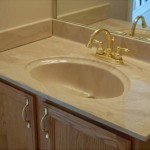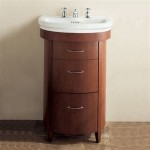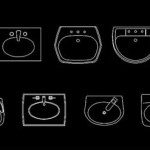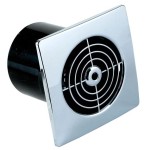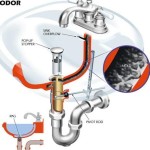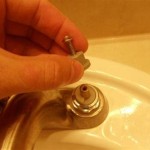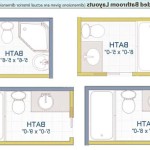How To Clean Sticky Bathroom Floor
A sticky bathroom floor is an undesirable condition often encountered in households. This stickiness typically arises from the accumulation of various substances, including spilled toiletries, soap residue, hair products, and general grime. Understanding the causes and employing proper cleaning methods is crucial for effectively addressing this issue and maintaining a hygienic and aesthetically pleasing bathroom environment.
The presence of a sticky film on the bathroom floor is not merely an aesthetic concern. It can also contribute to the accumulation of dirt and bacteria, potentially leading to unpleasant odors and harboring germs. Furthermore, a sticky surface can pose a safety hazard, increasing the risk of slips and falls. Therefore, regular and thorough cleaning protocols specifically targeting the removal of sticky residues are essential for bathroom maintenance.
Identifying the Cause of the Stickiness
Before embarking on the cleaning process, it is beneficial to determine the likely cause of the sticky residue. This identification process can inform the selection of the most effective cleaning agents and techniques. Several common culprits contribute to the stickiness of bathroom floors.
One frequent offender is soap scum. This substance is formed when soap reacts with hard water minerals, creating a film that adheres to surfaces. Soap scum can be particularly challenging to remove due to its insolubility in water. Similarly, spilled shampoo, conditioner, and other hair products often contain substances that can create a sticky layer on the floor. These products often contain polymers, oils, and other ingredients designed to adhere to hair, and they exhibit similar adhesive properties on bathroom floor surfaces.
Another contributing factor can be residual build-up from cleaning products themselves. If cleaning solutions are not properly rinsed away after application, they can leave behind a sticky film. This is especially true for cleaning products that contain waxes or polymers intended to impart shine. Dust and dirt that settle on the floor and mix with moisture can also contribute to the overall stickiness. These particles adhere to the damp surface, creating a grime layer that exacerbates the problem.
Finally, inadequate ventilation in the bathroom can exacerbate the accumulation of sticky residues. High humidity levels promote the growth of mold and mildew, and the combination of moisture and spilled products can create a breeding ground for sticky substances. Identifying the primary source of the stickiness informs the selection of the appropriate cleaning solution and technique.
Effective Cleaning Methods for Sticky Bathroom Floors
Once the likely cause of the stickiness is identified, the appropriate cleaning method can be selected. Several cleaning solutions and techniques are effective in removing sticky residues from bathroom floors. The choice of method depends on the floor material, the severity of the stickiness, and personal preferences.
One common and effective method involves using a mixture of warm water and vinegar. Vinegar's acidity helps to dissolve soap scum and other mineral deposits. A solution of one part vinegar to two parts warm water can be prepared and applied to the affected area. Allow the solution to sit for several minutes to loosen the sticky residue before scrubbing with a mop or sponge. It is important to note that vinegar should not be used on certain types of flooring, such as natural stone, as it can damage the surface. Always test the solution on an inconspicuous area first to ensure compatibility.
Another effective cleaning solution involves using a commercial bathroom cleaner specifically formulated for removing soap scum and grime. These cleaners typically contain detergents and solvents that break down sticky residues. Follow the manufacturer's instructions carefully when using these products, and ensure adequate ventilation to avoid inhaling fumes. It is also crucial to rinse the floor thoroughly after cleaning with a commercial cleaner to remove any remaining residue.
For more stubborn sticky residues, a paste made from baking soda and water can be applied. Baking soda is a mild abrasive that helps to scrub away grime without damaging the floor surface. Apply the paste to the affected area, let it sit for several minutes, and then scrub with a brush or sponge. Rinse thoroughly with clean water after scrubbing.
Steam cleaning is another effective method for removing sticky residues from bathroom floors. Steam cleaners use high-temperature steam to loosen dirt and grime, making it easier to wipe away. Steam cleaning is particularly effective on tile and grout, as the steam can penetrate deep into the pores to remove embedded dirt and sticky residue. Additionally, steam cleaning is a chemical-free option, making it a safer and more environmentally friendly choice.
Regardless of the chosen cleaning method, it is essential to use appropriate tools and techniques. A microfiber mop or sponge is ideal for cleaning bathroom floors, as it effectively picks up dirt and grime without leaving streaks. Avoid using abrasive scrub brushes that can scratch the floor surface. When scrubbing, apply moderate pressure and focus on areas with heavy residue build-up. Rinse the floor thoroughly after scrubbing to remove any remaining cleaning solution. Drying the floor with a clean towel or mop will help prevent water spots and further residue build-up.
Preventive Measures to Minimize Stickiness
While effective cleaning methods are essential for removing sticky residues, implementing preventive measures is crucial for minimizing their accumulation and maintaining a clean bathroom floor. Several strategies can be employed to reduce the frequency and severity of stickiness.
One fundamental preventive measure is to regularly clean the bathroom floor. Sweeping or vacuuming the floor regularly removes loose dirt and debris before they can mix with moisture and create sticky residues. Mopping the floor at least once a week, or more frequently in high-traffic bathrooms, helps to remove spilled products and prevent residue build-up. The frequency of cleaning should be adjusted based on usage and the propensity for spills and grime accumulation.
Another important preventive measure is to ensure adequate ventilation in the bathroom. Using the exhaust fan during and after showers and baths helps to remove excess moisture, reducing the likelihood of mold and mildew growth and preventing the accumulation of sticky residues. If the bathroom lacks an exhaust fan, opening a window can provide similar ventilation. Good ventilation contributes to a drier environment, which discourages the growth of sticky film and residue.
Furthermore, promptly cleaning up spills can prevent them from drying and forming sticky residues. Spilled shampoo, conditioner, or other toiletries should be wiped up immediately with a damp cloth. Addressing spills quickly prevents them from adhering to the floor surface and simplifies the cleaning process. Consider placing mats or rugs in high-spill areas, such as in front of the shower or sink, to absorb spills and prevent them from spreading.
The type of soap and cleaning products used can also influence the accumulation of sticky residues. Using liquid soaps and shower gels instead of bar soaps can reduce the amount of soap scum that forms. Bar soaps often contain tallow and other ingredients that react with hard water to create insoluble deposits. When selecting cleaning products, choose those that are specifically designed for bathroom surfaces and that leave minimal residue. Avoid products that contain waxes or polymers, as these can contribute to the build-up of sticky film.
Finally, consider installing a water softener if hard water is a recurring issue. Hard water contains high levels of minerals, such as calcium and magnesium, which react with soap to form soap scum. A water softener removes these minerals from the water supply, reducing the formation of soap scum and making it easier to clean bathroom surfaces. Installing a water softener can contribute significantly to preventing the accumulation of sticky residues and maintaining a cleaner bathroom environment.
By understanding the causes of sticky bathroom floors, employing effective cleaning methods, and implementing preventive measures, it is possible to maintain a clean, hygienic, and safe bathroom environment. Regular cleaning, proper ventilation, prompt spill clean-up, and the selection of appropriate cleaning products are all crucial components of a comprehensive bathroom maintenance strategy.

4 Reasons Your Floors Are Sticky And How To Fix Them

How To Remove Hairspray Residue From Floor Adventures Of A Diy Mom

Why Your Floors Are Sticky Residue Matters Envirox

How To Clean Tile Floors With Wd 40 Multi Use

How To Clean Sticky Floors 5 Ways

Problem Sticky Floor How To Fix It Esb Flooring

3 Best Ways To Get Rid Of Hard Water Stains From Bathroom Tiles Kent

How To Clean Sticky Floors 5 Ways

Problem Sticky Floor How To Fix It Esb Flooring

How To Remove L And Stick Floor Tile A Erfly House
